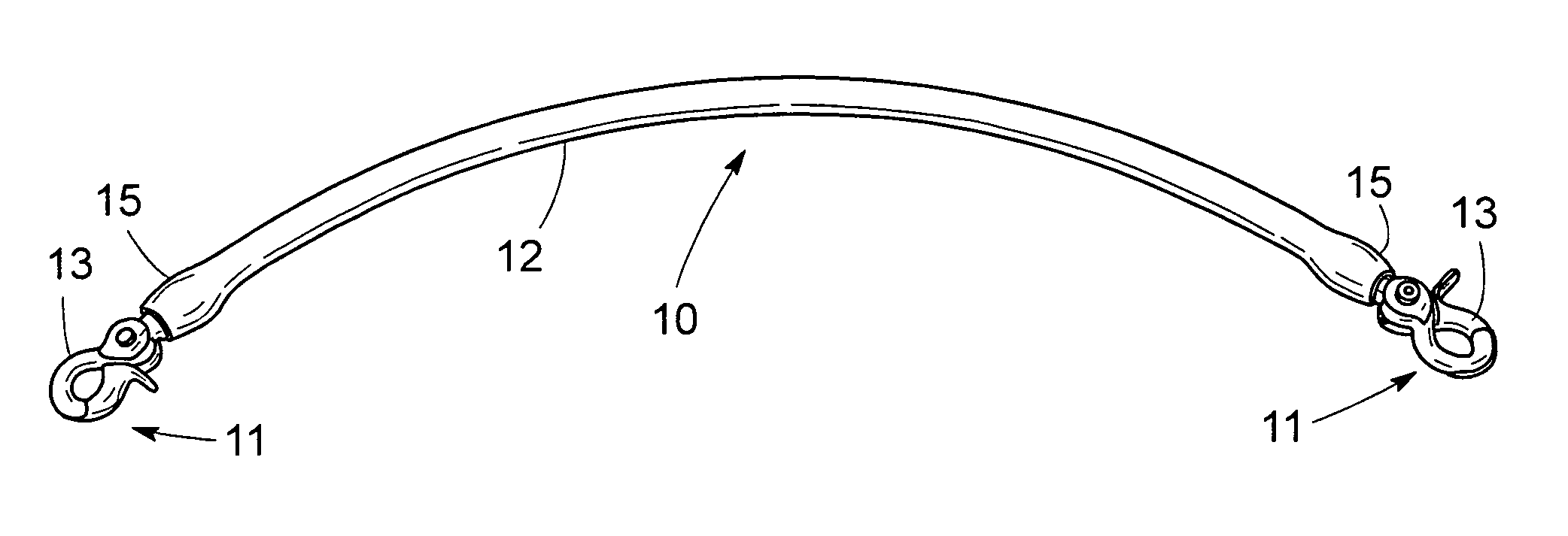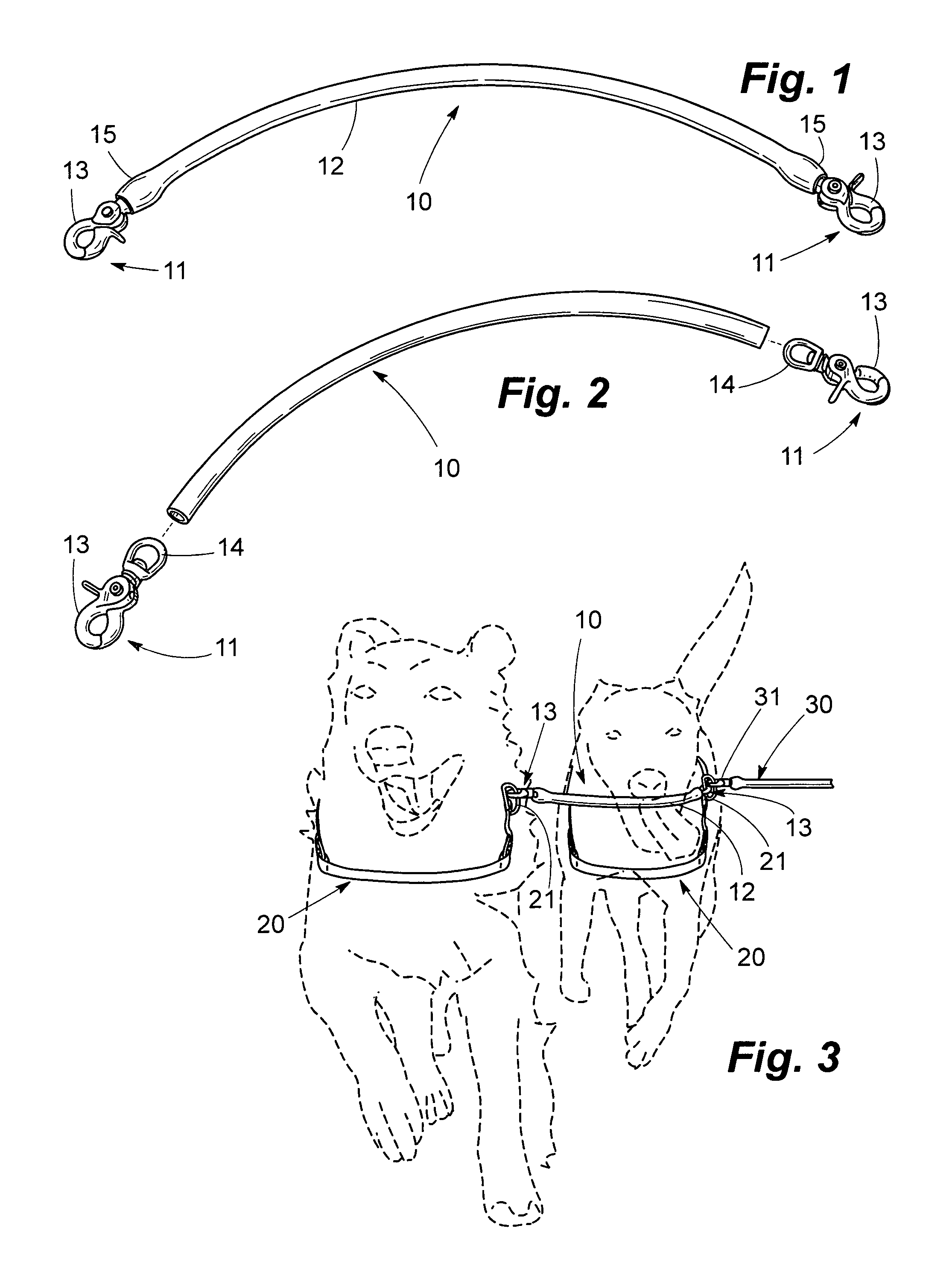Dog coupler and method of manufacture
a technology of couplers and dogs, applied in the field of dog couplers and methods of manufacture, can solve the problems of lack of feedback mechanism between the possibility that the leash will become entangled, and the person walking the dog to lose control, so as to facilitate the process of connecting the coupler and foster the feeling of companionship
- Summary
- Abstract
- Description
- Claims
- Application Information
AI Technical Summary
Benefits of technology
Problems solved by technology
Method used
Image
Examples
Embodiment Construction
[0019]In the drawings and indicated generally by the reference numeral 10 is a dog coupler according to the present invention. As illustrated in FIG. 1, the dog coupler 10 comprises an elongated tube 12, which, in its relaxed state, is slightly curved, and a pair of clip assemblies 11. Available commercially as a single unit, each clip assembly 11 includes a attachment ring 14 on which a spring-loaded clip 13 is pivotally mounted (FIG. 2). Preferably, the tube 12 is fabricated from urethane plastic tubing with a standardized hardness rating of 90 D and measures ½ inch in outside diameter, about ⅜ inch in inside diameter, and, when straightened out lengthwise, about 18 inches in length.
[0020]In assembled relation, each of the attachment rings 14 is individually held within a barb 15 formed proximate with a distal end of the tube 12 (FIGS. 1 and 2). Formed in the course of pressure fitting the ring 14, which has an outer diameter greater than that of the tube's inner diameter, into on...
PUM
 Login to View More
Login to View More Abstract
Description
Claims
Application Information
 Login to View More
Login to View More - R&D
- Intellectual Property
- Life Sciences
- Materials
- Tech Scout
- Unparalleled Data Quality
- Higher Quality Content
- 60% Fewer Hallucinations
Browse by: Latest US Patents, China's latest patents, Technical Efficacy Thesaurus, Application Domain, Technology Topic, Popular Technical Reports.
© 2025 PatSnap. All rights reserved.Legal|Privacy policy|Modern Slavery Act Transparency Statement|Sitemap|About US| Contact US: help@patsnap.com


